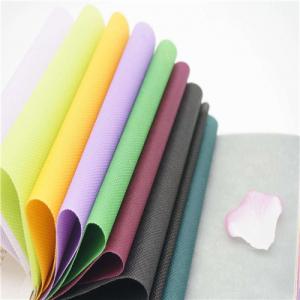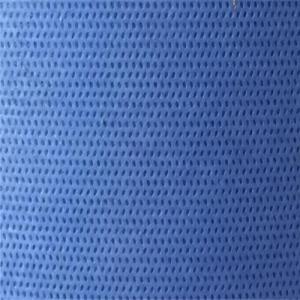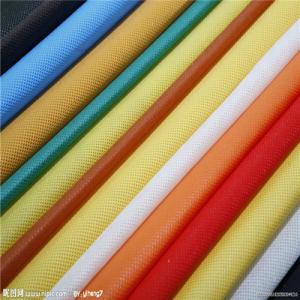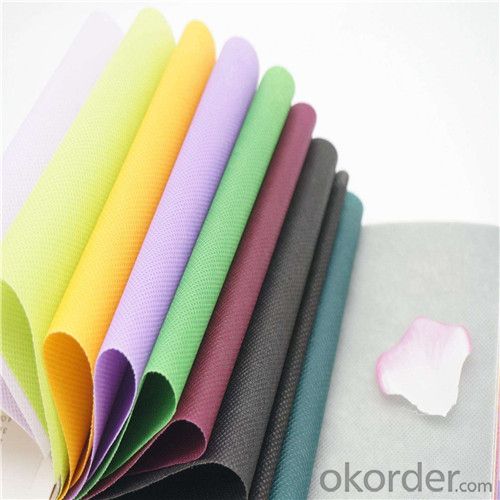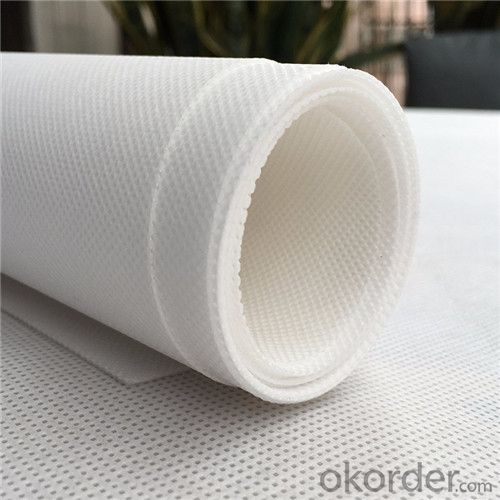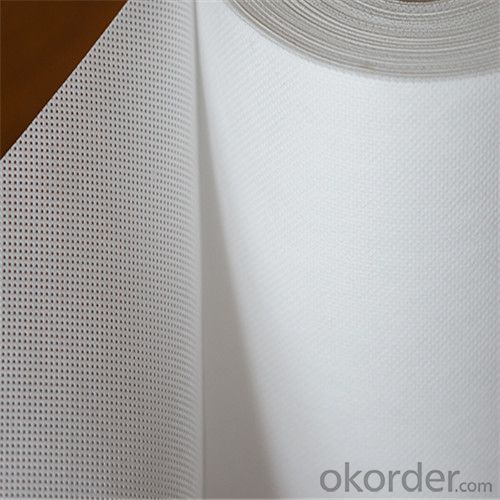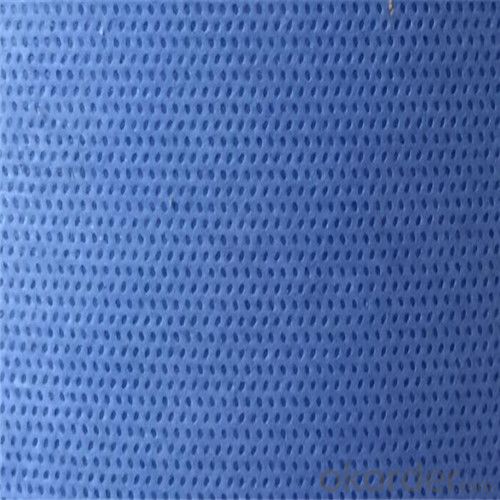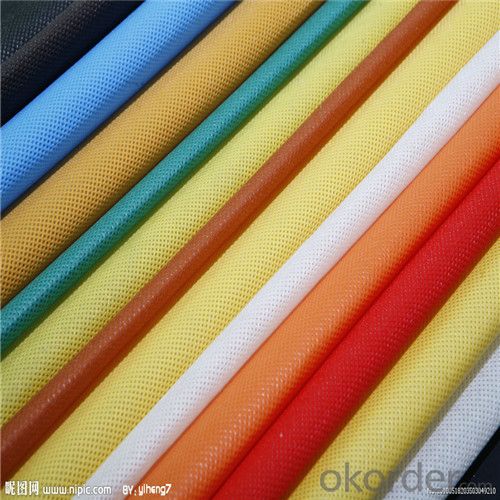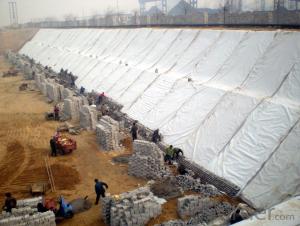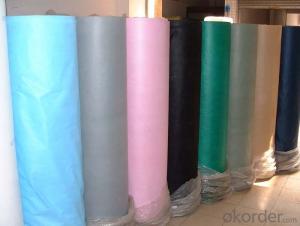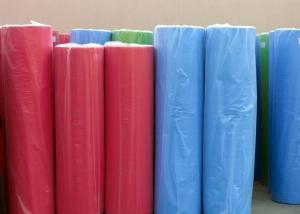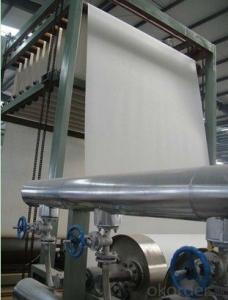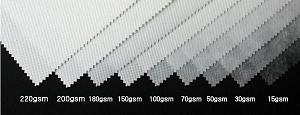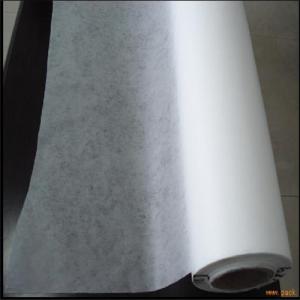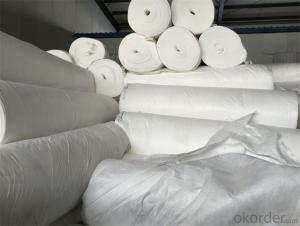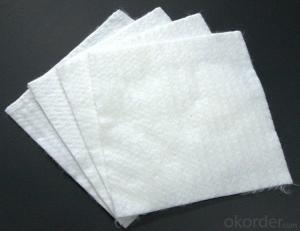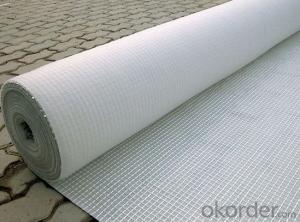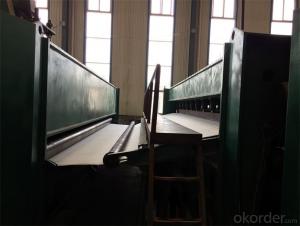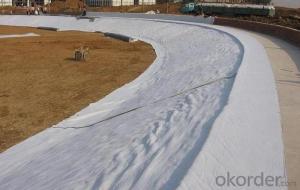Spun Bonded Non Woven Fabric from 9gr/m2 to 300gr/m2
- Loading Port:
- China main port
- Payment Terms:
- TT or LC
- Min Order Qty:
- 1000 m²
- Supply Capability:
- 1000000 m²/month
OKorder Service Pledge
OKorder Financial Service
You Might Also Like
Specification
Non Woven Fabric Introduction
| Color | White,blue,green,pink,black or as customized |
| Material | 100% Polypropylene |
| Width | maximum width 240cm (can be slit) |
| Weight | 9-200gsm |
| Characteristics | High quality, Stable uniformity, Adequate Weight; Soft Feeling, Eco Friendly, Recycleable, Breathable; Good Strength |
| Packing | Rolled with 3" paper tube inside and transparent PE bag and plastic film outside |
| Application | Health, medical, industrial, household, agriculture |
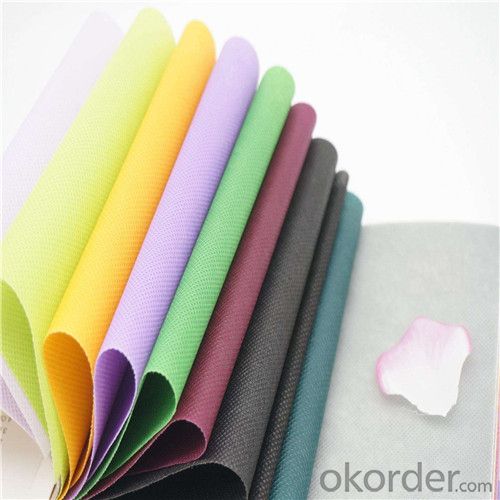

Our Service
Quality assurance
1.On a regular basis or as per your request,we entrust national testing agencies to conduct quality inspections
2. Strictly in accordance with the ISO9001-2008 international quality system standard,we monitor and manage the whole process throughout production,quality testing,and measurement to ensure product quality
3. For quality-related construction delay or substandard construction(except for damage or losses due to customer’s responsibility or irresistible natural disasters),we have refunding,replacement,and repair services.We will respond to customers’ feedbacks on quality issues within 24 hours.
RFQ:
Q: What kind of payments does jenor support?
A: T/T, L/C, Cash are accepted.
Q: Do you charge for the samples?
A: Accordeing to our company policy, the samples are free, we only charge the freight fee. And we will return the freight fee during the next order.
Q: Can you produce according to customers' design?
A: Sure, we are professional manufacturer, OEM and ODM are both welcome.
- Q: Can geotextiles be used in groundwater control?
- Yes, geotextiles can be used in groundwater control. They are commonly employed as part of drainage systems to filter and separate different layers of soil, preventing the clogging and migration of fine particles. Geotextiles can also be used in conjunction with geosynthetics to create impermeable barriers, preventing the seepage or flow of groundwater in certain applications.
- Q: What are the key factors affecting the durability of geotextiles?
- The key factors affecting the durability of geotextiles include exposure to environmental conditions such as ultraviolet (UV) radiation, temperature variations, moisture, and chemical exposure. The quality of the geotextile material and its resistance to degradation, abrasion, and puncture also play a crucial role in determining its durability. Proper installation, maintenance, and adherence to design specifications are additional factors that can impact the longevity of geotextiles.
- Q: Geotextile geotextile geotextile construction geotextile specific application
- Geotextile in the construction of the main building is to protect the concrete: 1, in the summer construction of geotextile is to protect the concrete in the water; 2, in the winter construction of geotextile that can protect the concrete moisture also play a role in insulation.
- Q: What are the different factors that affect the performance of geotextiles?
- There are several factors that can affect the performance of geotextiles. These include the type and quality of the material used in the geotextile, its thickness, weight, and strength. The installation technique and conditions, such as the soil type and slope, also play a significant role. Environmental factors, such as temperature, moisture, and chemical exposure, can impact the durability and effectiveness of geotextiles. Additionally, the design and engineering considerations, including the intended application and load requirements, should be taken into account when evaluating the performance of geotextiles.
- Q: Can geotextiles be used for soil reinforcement in embankments?
- Yes, geotextiles can be used for soil reinforcement in embankments. Geotextiles are commonly used in civil engineering projects to improve the stability and strength of soil structures. They are effective in preventing soil erosion, enhancing drainage, and distributing loads, making them suitable for reinforcing embankments and preventing slope failures.
- Q: Geosynthetics direct shear instrument reference standards which
- ISO.1, GB / T.1, ASTMD5321, JTGE50T1129, BiaozhunJiTuan-2017, SL / T235-1999. hope this helps.
- Q: How do geotextiles help with filtration?
- Geotextiles help with filtration by preventing the passage of fine soil particles while allowing water to pass through. They act as a barrier, trapping sediments and contaminants, thus improving water quality and preventing soil erosion.
- Q: What are the factors to consider when selecting a geotextile for a specific application?
- When selecting a geotextile for a specific application, there are several factors to consider. Firstly, the intended function of the geotextile needs to be evaluated. This includes determining whether it will be used for separation, filtration, reinforcement, or drainage purposes. Secondly, the site conditions and environmental factors such as soil type, climate, and potential chemical exposure must be taken into account. The required strength, durability, and longevity of the geotextile should also be considered. Additionally, the cost-effectiveness and availability of the specific geotextile should be assessed. Finally, the installation and maintenance requirements of the geotextile need to be evaluated to ensure proper implementation and long-term performance.
- Q: Garage top back to the soil before the drainage board geotextile take what role
- The top surface of the drainage board glue a layer of geotextile filter to prevent the passage of soil particles, so as to avoid drainage channel obstruction of the drainage channel, said white is to do a filter layer, the water discharged to the designated location, the traditional process is Block ah, stone ah, what do the water layer, and now with the drainage board is not the reason for the stone is the drainage board is plastic, light weight, can reduce the load of the building. Manufacturers of drainage board geotextile waterproof board
- Q: Can geotextiles be used in geotextile wrapped columns?
- Yes, geotextiles can be used in geotextile wrapped columns. Geotextiles are commonly used in geotechnical engineering to enhance soil properties, provide drainage, and prevent erosion. When used in geotextile wrapped columns, they can provide additional reinforcement, improve stability, and control soil movement.
Send your message to us
Spun Bonded Non Woven Fabric from 9gr/m2 to 300gr/m2
- Loading Port:
- China main port
- Payment Terms:
- TT or LC
- Min Order Qty:
- 1000 m²
- Supply Capability:
- 1000000 m²/month
OKorder Service Pledge
OKorder Financial Service
Similar products
Hot products
Hot Searches
Related keywords
